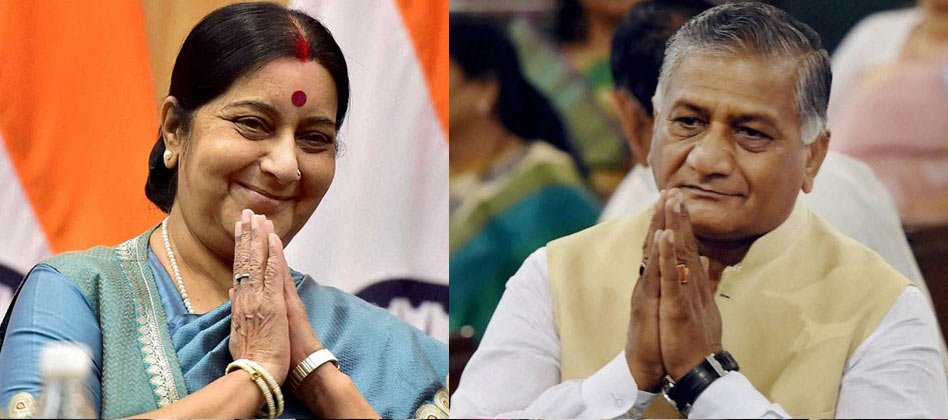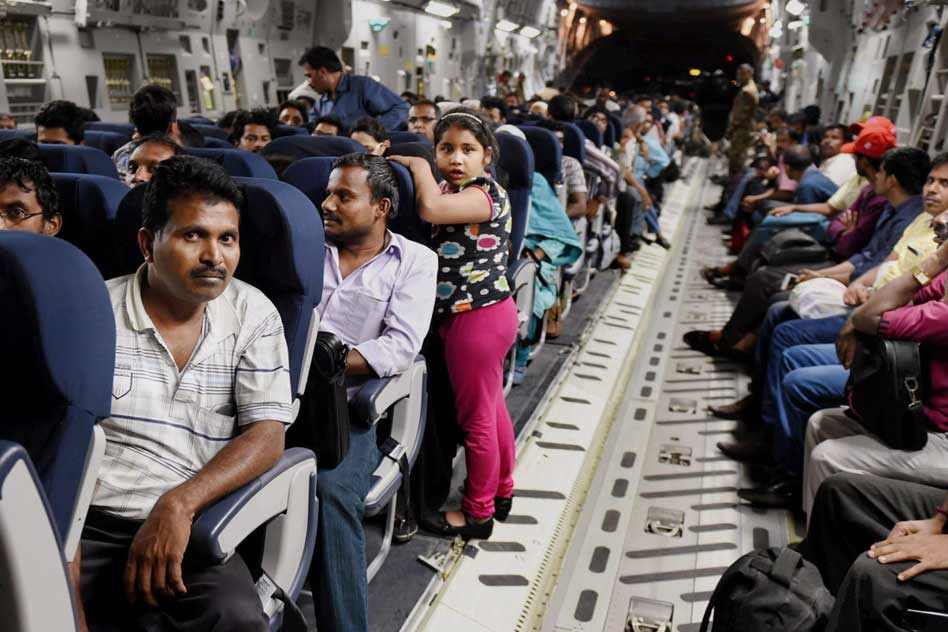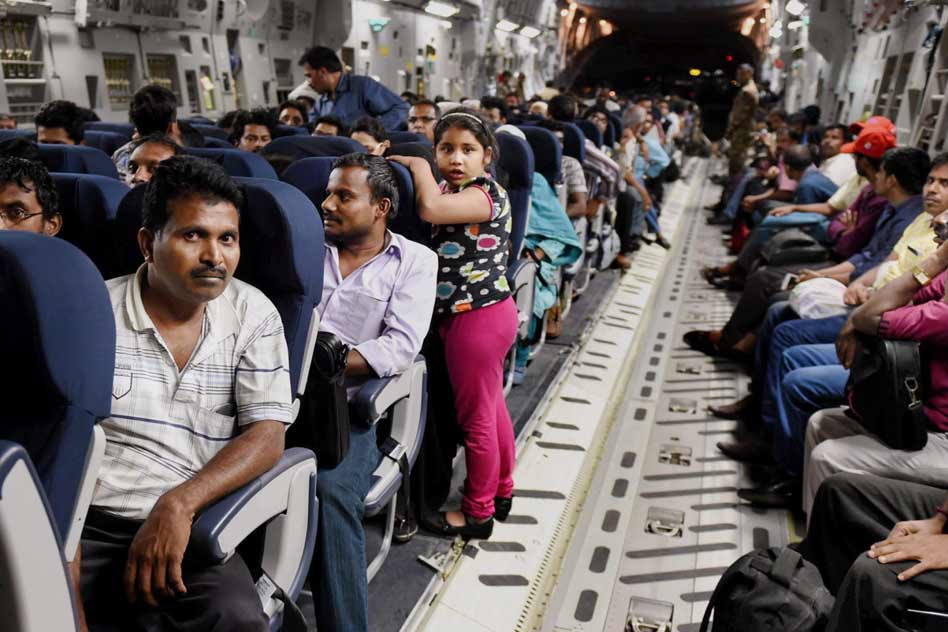Image Source: Huffpost
People are flocking to nearby theatres to watch Akshay Kumar’s Airlift that depicts a ‘not very true’ version of the Kuwait rescue operations that took place after Saddam Hussein’s dreadful invasion in 1990. Despite being plagued by distorted facts and non-existent characters, the movie has reminded the country of one of the largest rescue operations ever conducted in the world. The Indian government managed to rescue a copious number of expatriates from a war-torn Kuwait to enter the Guinness Book Of World Records for its unparalleled efforts.
But one other successful operation by the Indian officials led by the current Minister of External Affairs of India Sushma Swaraj & the current Minister of State of External Affairs General V K Singh, although not as large, was of paramount importance not only to our country but also to those countries who at the time lacked means to reach their citizens when they needed help. Operation Raahat came into effect to bring stranded Indians home from the already turbulent country of Yemen that was about to turn into a battle ground for the ever-impending Shia-Sunni face off.
Yemen has gradually been moving towards its breakdown ever since the Yemeni Revolution in 2011, long before the Operation Raahat came into being on April 1st 2015. But in the few months preceding India’s decision to start evacuation, the political unrest had reached its highest peak in the southern country of the Arabian Peninsula. Saudi Arabia arrived into the scenario to prevent the Houthis, a Zaidi Shia led movement, from taking over control of Yemen. Meanwhile, the shiite rebels were being backed by Iran to promote the interests of Shias and strengthen their hold in the Middle East. Ultimately Saudi started its military intervention in Yemen on 27th March 2015 in its quest to crush the shiite rebellion.

Much prior to this, India’s Ministry of External Affairs(MEA) had issued advisories on January 21st 2015 and backed them up with further notices to the Indian expatriates urging them to leave the fallen state. On March 25th, an urgent evacuation advisory was issued foreseeing the bloodbath that would ensue with the Saudi intervention. Nevertheless, about 4000 Indian citizens remained trapped in Yemen and could not leave the country as all the airports where being held by the Saudi forces while airstrikes began on a full scale in an attempt to vanquish the Houthis.
During those critical moments, friendly ties with Saudi were one of the most important factors that resulted in the success of the rescue operation launched by India. Several calls were made by the Prime Minister to King Salman to ensure complete co-operation of the Saudi forces in helping rescue Indians from Yemen. The operation conducted under the supervision of Minister of State for External Affairs, General V K Singh, officially started evacuating on April 1st. India dispatched two ferries from Lakshadweep, two Airbus A320, the INS Sumitra(P59), two C-17s, INS Mumbai(D62), INS Tarkash(F50) to act as evacuation vessels as well as to protect the Indian ships and crafts.
This massive rescue effort by India eventually resulted in the rescue of over 56,00 people including several foreigners. About 4,640 of those evacuated were Indians. The total number of countries whose citizens India managed to bring out of Yemen was 41. Requests from several countries poured in as they were unable or incapable of reaching Yemen in time to save their people.
Out of the several reasons for India’s triumphant rescue mission, the most important was India’s diplomatic relationship with Saudi Arabia that got our crafts permission to fly through the no-fly zones established by the Saudi led opposition. Negotiating with them was important as India stayed neutral in the matter of the Houthis rebellion and did not believe in taking sides as the issue at stake was something local to the region. Secondly, India’s proximity to the location and also its access to several large aircrafts and ships in a short span of time added to the speed with which the entire mission was carried out. Several countries including the United States of America requested India to assist them with the rescuing of their citizens as India was one of the first countries to arrive at the scene. Lastly, the agility with which the situation was handled by the Indian Army officials kept the casualties to a bare minimum while successfully bringing most of the people to safety.
Raahat is viewed as one of India’s most successful operations thanks to the brilliant decision making and efforts of the Indian officials and the Indian Army when time was of the essence. The Logical Indian applauds Sushma Swaraj and General V K Singh for carrying out one of the most successful rescue operations and saving lives of many. It will always be viewed as a smaller feat in comparison to the Kuwait rescue operations due to the sheer number of people rescued in the latter, but Raahat is a brilliant example of efficiency and speed to all the future missions that India might have to undertake.












